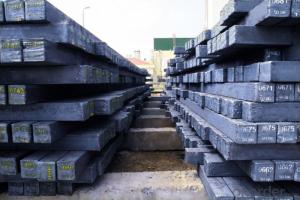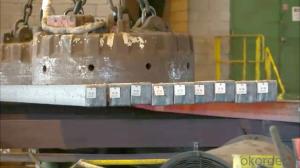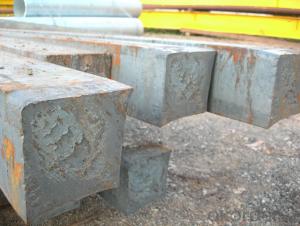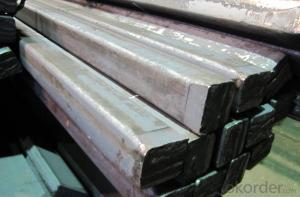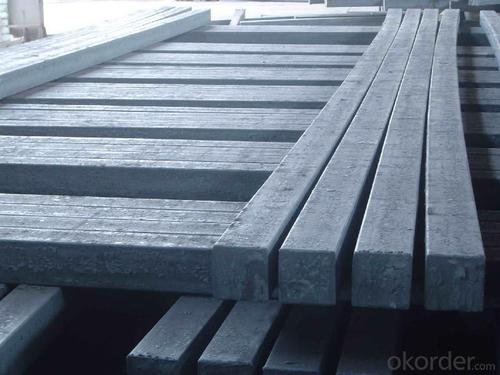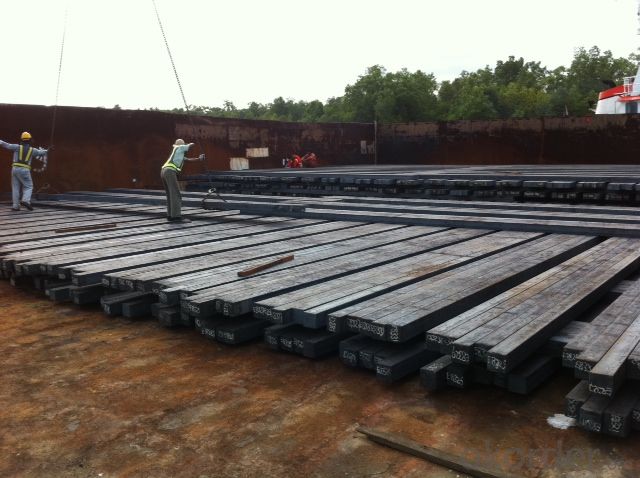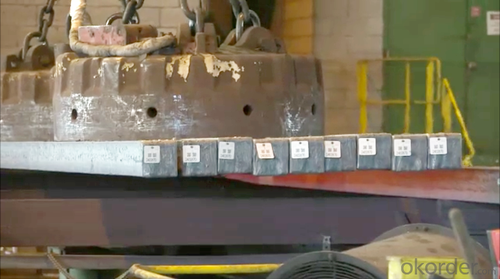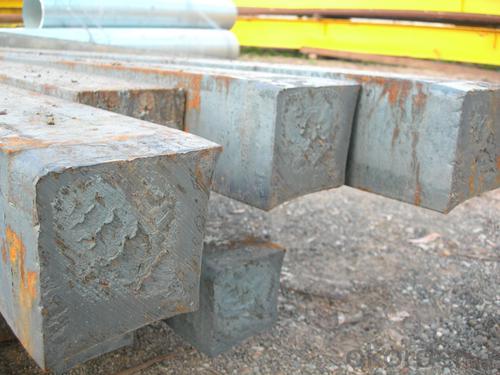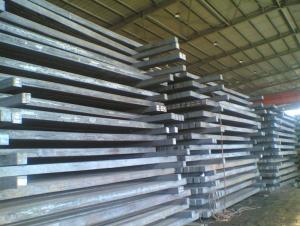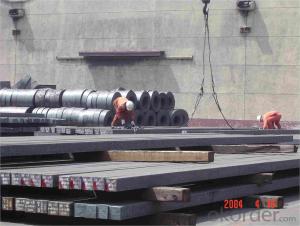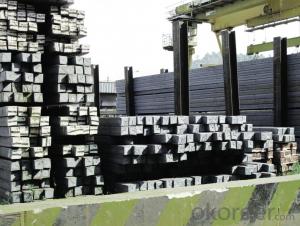Q235/3SP 155MM Blast Furnace Hot Rolled Steel Billet
- Loading Port:
- Tianjin
- Payment Terms:
- TT OR LC
- Min Order Qty:
- 2000 m.t.
- Supply Capability:
- 30000 m.t./month
OKorder Service Pledge
OKorder Financial Service
You Might Also Like
Description of Q235/3SP 155MM Blast Furnace Hot Rolled Steel Billet
Our hot dip galvanised steels consist of a steel substrate with a metallic zinc coating applied by means of a continuous hot dip galvanising process. Metallic zinc coatings are available in steel grades ranging from steel for bending and deep drawing applications, to structural steels and high yield strength steels.
A glossy surface finish obtained under specific skin-pass conditions (either non-skin-passed or skin- passed with smooth cylinders to obtain low roughness) can be provided if required at time of enquiry.
Advantage of Q235/3SP 155MM Blast Furnace Hot Rolled Steel Billet
Uncoated CR steel sheet With the features of in line with the international highest standards in demension and shape, excellent surface finish and properties, the products are mainly used in home appliance and automobile industries.
Galvanized steel sheet(include HDG and EG)
With the features of good corrosion resistance, the products are mainly used in automobile, home appliance, electronics, building and machinery manufacture industries, etc.
Precoated steel sheet With the features of enviromental protection and good processablility, long lasting surface durability, rich in colors, the products are maily used in building, home appliance and furniture industries, etc.
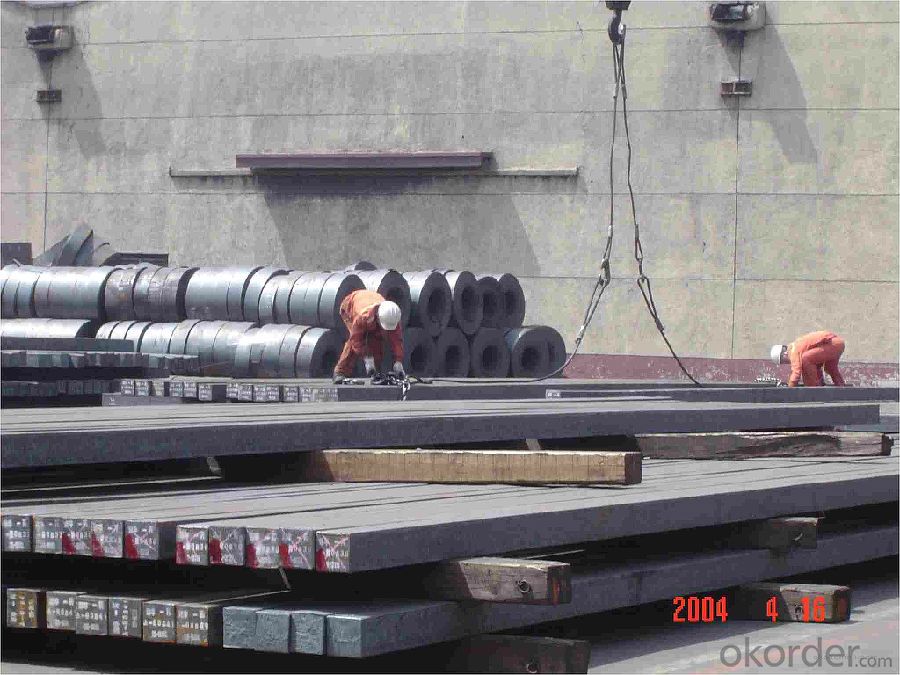
Applications of Q235/3SP 155MM Blast Furnace Hot Rolled Steel Billet
Our hot dip galvanised steels can be used in a very wide range of applications for industrial markets, both indoors and outdoors. Some of the most common applications are:
Building: wide sections for roofing and cladding, doors, door frames, metallic ceilings, partitions, structural members etc
Domestic appliances: all appliances for this sector (both white and brown goods) are manufactured with hot dip galvanised steels
Miscellaneous: electrical cabinets, aeraulic components, air conditioners, road signs etc
Zinc hot dip galvanised steel is suitable for contact with foodstuffs under certain conditions, as specified in European directive 89/109/EEC and French standard NF A 36-712-1. Please contact us for further information on this subject.
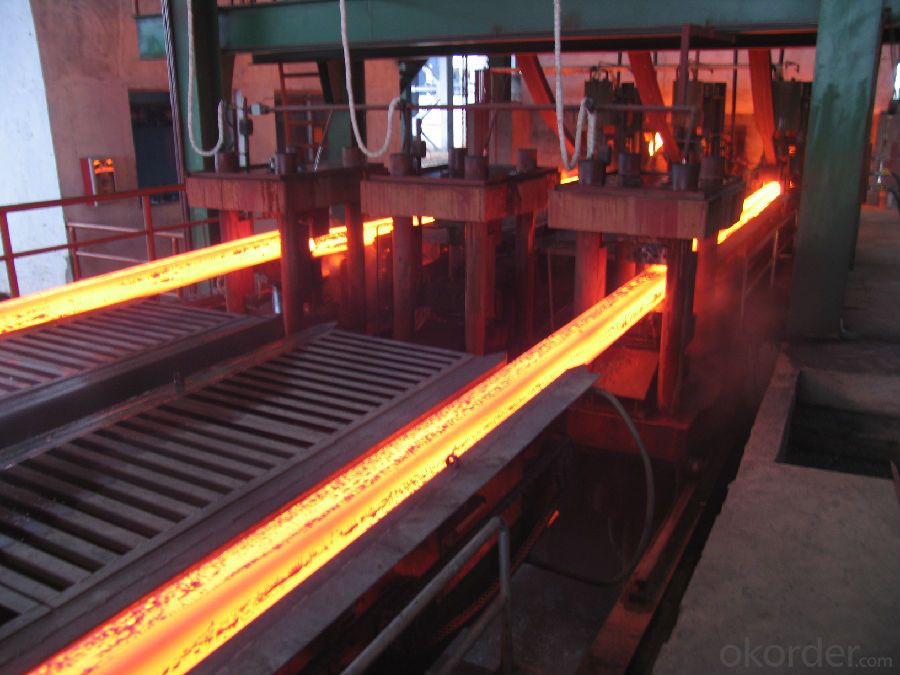
Specifications of Q235/3SP 155MM Blast Furnace Hot Rolled Steel Billet
Quality | Q/BQB 440-2003 | JIS G3312-1994 JIS G3321 | EN 10326-2004 | ASTM A653-02a |
EN 10327-2004 | (BASE PLATE) | |||
(BASE PLATE) | ||||
Commercial Steel | DC51D | SGCC SGLCC | DX51D+Z DX51D+AZ | CS Type A/B/C |
Forming Steel | St01,St02,St03 | SGCD1 SGLCD1 | FS Type A, Type B | |
Drawing | DC52D /DC53D | - | DX52D+Z DX52D+AZ | DDS TYPE A/C |
Steel | DX53D+Z DX53D+AZ | |||
Structural | S280GD (StE28) | SGC400 SGLC400 | S280D+Z DX54D+AZ | SS275 |
Steel | S350GD (StE34) | SGC440 SGLC440 | S350D+Z S350D+AZ | SS340 Class1 |
FAQ of Q235/3SP 155MM Blast Furnace Hot Rolled Steel Billet
We have organized several common questions for our clients,may help you sincerely:
1. How Can I Visit There?
Our company is located in Tianjin City, China, near Beijing. You can fly to Tianjin Airport Directly. All our clients, from home or aboard, are warmly welcome to visit us!
2. How Can I Get Some Sample?
We are honored to offer you sample.
3. Why choose CNBM?
Our delivery time about 15-20days for standard sizes, if you have other requirements like hardness, quanity and width ,it is about 20-40days. But don't worry we also try our best for the delivery time ,because time longer and our cost is higher.
- Q: How are steel billets used in the manufacturing of railway equipment?
- Steel billets are used in the manufacturing of railway equipment as they are heated and then shaped into various components such as rails, wheels, axles, and couplings. These billets serve as the raw material that undergoes further processing, including cutting, bending, and welding, to create the final products used in the construction and maintenance of railway systems.
- Q: Can steel billets be used for marine applications?
- Yes, steel billets can be used for marine applications. Steel billets are commonly used in the construction of ships, offshore structures, and marine equipment due to their high strength, durability, and corrosion resistance properties. They provide the necessary strength to withstand the harsh marine environment and can be shaped and welded to meet specific design requirements.
- Q: What are the main factors that affect the competitiveness of steel billets manufacturers?
- There are several factors that significantly affect the competitiveness of steel billets manufacturers. These factors can determine the success or failure of a manufacturer in the highly competitive steel industry. 1. Cost of raw materials: The cost and availability of raw materials, such as iron ore and coal, play a crucial role in determining the competitiveness of steel billets manufacturers. Fluctuations in the prices of these raw materials can impact the overall production costs, and manufacturers need to ensure they have a reliable and cost-effective source of raw materials. 2. Production efficiency: The efficiency of the manufacturing process is another key factor. Manufacturers need to have streamlined production processes and advanced technology to maximize output while minimizing costs. Improving production efficiency can help manufacturers achieve economies of scale, which in turn can enhance competitiveness. 3. Quality control: The quality of steel billets is of utmost importance, as it determines the performance and durability of the final products made from these billets. Manufacturers need to implement stringent quality control measures to ensure that their products meet the required industry standards. Consistently producing high-quality steel billets can give manufacturers a competitive edge. 4. Technological advancements: Keeping up with technological advancements is crucial for manufacturers to stay competitive. Investing in advanced machinery, automation, and digitalization can improve production efficiency, reduce costs, and enhance product quality. Manufacturers need to adopt new technologies and continuously innovate to stay ahead of their competitors. 5. Energy costs: Energy-intensive processes are involved in steel billets manufacturing, and the cost of energy can significantly impact the competitiveness of manufacturers. Access to affordable and reliable energy sources is essential for manufacturers to maintain competitive prices. 6. Market demand and competition: The overall demand for steel billets and the level of competition in the market are significant factors affecting competitiveness. Manufacturers need to have a deep understanding of market trends, customer preferences, and emerging applications to align their production accordingly. Additionally, they must develop a strong marketing strategy to effectively compete with other manufacturers in the industry. 7. Access to skilled labor: The availability of skilled labor is crucial for manufacturers to maintain competitiveness. Skilled workers with expertise in steel production processes can contribute to improved efficiency and quality. Manufacturers need to invest in training programs and attract and retain skilled workers to stay competitive. 8. Government regulations and policies: Government regulations related to environmental compliance, labor laws, and trade policies can impact the competitiveness of steel billets manufacturers. Compliance with these regulations can add to the costs and administrative burden for manufacturers. Adapting to changing regulations and staying in line with industry standards is essential to maintain competitiveness. In conclusion, the competitiveness of steel billets manufacturers is influenced by various factors, including raw material costs, production efficiency, quality control, technological advancements, energy costs, market demand and competition, access to skilled labor, and government regulations. Manufacturers need to address these factors strategically to stay competitive in the ever-evolving steel industry.
- Q: What is the role of steel billets in the manufacturing of railway signaling systems?
- Steel billets play a crucial role in the manufacturing of railway signaling systems. These billets serve as the primary raw material for the production of various components that are essential for the functioning of these systems. Railway signaling systems are responsible for ensuring the safe and efficient movement of trains on the tracks. They comprise a complex network of electrical and mechanical devices that control the traffic flow, provide information to train operators, and maintain a safe distance between trains. To manufacture these systems, steel billets are utilized in several ways. Firstly, steel billets are used to produce the structural components of railway signaling systems. These components include signal poles, posts, and brackets that support the signaling devices such as lights, signals, and indicators. Steel is chosen for these structural elements due to its high strength, durability, and resistance to environmental factors such as wind, rain, and temperature fluctuations. Secondly, steel billets are employed in the production of various electrical components used in railway signaling systems. These components include wiring conduits, junction boxes, and mounting plates that house and protect the electrical connections and circuitry. Steel's electrical conductivity properties make it an ideal material for these applications. Additionally, steel billets are also utilized in the manufacturing of mechanical components within railway signaling systems. These components include gears, levers, and linkages that facilitate the movement and operation of the signaling devices. Steel's mechanical properties, such as its hardness and ability to withstand high loads, ensure the reliability and longevity of these mechanisms. In summary, steel billets are essential in the manufacturing of railway signaling systems as they provide the necessary raw material for the production of structural, electrical, and mechanical components. Their strength, durability, electrical conductivity, and mechanical properties make them well-suited for the demanding requirements of these systems, ultimately contributing to the safe and efficient operation of railways.
- Q: What are the different types of shearing machines used for steel billets?
- Steel billets can be cut using various types of shearing machines. These machines are designed for precise and efficient cutting operations in the steel industry. Here are some examples of the different shearing machines used for steel billets: 1. Guillotine Shears: Guillotine shears are widely used for cutting steel billets. They have a fixed bed and a vertically moving blade that cuts through the material. Guillotine shears offer high cutting accuracy and can easily handle thick billets. 2. Flying Shears: Also known as rotary shears, flying shears are another popular option. They have a circular blade that rotates and cuts the billet as it moves along the conveyor. Flying shears are known for their high cutting speed and ability to handle large volumes. 3. Cold Shears: Cold shears are designed to cut steel billets at lower temperatures to prevent heat damage. They use hydraulic or mechanical systems to apply force and cut through the billet. Cold shears are commonly used in industries where cooling the billets is necessary before further processing. 4. Rotary Shears: Rotary shears are used to cut steel billets into smaller sections. They have multiple blades mounted on a rotating drum, which cuts the billet into desired lengths. Rotary shears offer high cutting efficiency and are often used when small-sized billets are required. 5. Hydraulic Shears: Hydraulic shears are versatile machines that can cut various materials, including steel billets. They use hydraulic power to provide the cutting force. Hydraulic shears have a high cutting speed and can efficiently handle large-sized billets. Each type of shearing machine mentioned above has its own advantages and is suitable for specific applications in the steel industry. The choice of shearing machine depends on factors such as billet size and thickness, required cutting accuracy, production volume, and other specific requirements of the steel processing operation.
- Q: How are steel billets used in the manufacturing of marine equipment?
- Steel billets are used in the manufacturing of marine equipment as they serve as raw materials that are subsequently forged or rolled into various components such as ship hulls, propeller shafts, and engine parts. These billets undergo a series of processes such as heating, rolling, and shaping to create the necessary strength and durability required for marine applications.
- Q: Are steel billets susceptible to corrosion?
- Yes, steel billets are susceptible to corrosion.
- Q: What are the different methods of steel billet surface finishing?
- There are several methods of steel billet surface finishing that are commonly used in the industry. These methods include: 1. Shot blasting: Shot blasting is a common method used to clean and prepare steel billets for further processing. It involves propelling abrasive particles at high speeds onto the surface of the billets. This process removes any rust, scale, or impurities from the surface, resulting in a clean and smooth finish. 2. Grinding: Grinding is another method used to achieve a smooth and even surface finish on steel billets. It involves the use of abrasive wheels or belts to remove material from the surface of the billets. Grinding can be done manually or using automated machinery, depending on the requirements and size of the billets. 3. Polishing: Polishing is a process that is typically used to achieve a high-gloss, reflective finish on steel billets. It involves the use of polishing compounds and buffing wheels to smooth out the surface and enhance its appearance. Polishing is often used for decorative purposes or when a high-quality finish is required. 4. Acid pickling: Acid pickling is a method used to remove any oxide scale or rust from the surface of steel billets. It involves immersing the billets in an acid solution, such as hydrochloric acid, to dissolve the impurities. Acid pickling is an effective way to achieve a clean and uniform surface finish on steel billets. 5. Passivation: Passivation is a process that is often used to improve the corrosion resistance of steel billets. It involves the immersion of the billets in a passivating solution, typically a mixture of nitric acid and water, to remove any surface contaminants and promote the formation of a protective oxide layer. Passivation can help to prevent the formation of rust and extend the lifespan of the steel billets. Overall, the choice of method for steel billet surface finishing depends on the desired finish, the size and shape of the billets, and the specific requirements of the application. Each method has its own advantages and considerations, and it is important to carefully select the appropriate method to achieve the desired surface finish.
- Q: Can steel billets be used in the production of electrical appliances?
- Yes, steel billets can be used in the production of electrical appliances. Steel billets are semi-finished products that are typically used to produce various steel products, including electrical appliances. The steel billets can be further processed and shaped into different components required for electrical appliances, such as casings, frames, brackets, and other structural parts. The use of steel provides strength, durability, and corrosion resistance, making it suitable for the demanding requirements of electrical appliances. Additionally, steel is a widely available and cost-effective material, making it a preferred choice for manufacturing electrical appliances.
- Q: Are steel billets prone to cracking during production?
- Yes, steel billets are prone to cracking during production. Due to the high temperatures and rapid cooling involved in the production process, internal stresses can develop in the billets, leading to cracks. Proper handling, heat treatment, and quality control measures can help minimize the risk of cracking.
Send your message to us
Q235/3SP 155MM Blast Furnace Hot Rolled Steel Billet
- Loading Port:
- Tianjin
- Payment Terms:
- TT OR LC
- Min Order Qty:
- 2000 m.t.
- Supply Capability:
- 30000 m.t./month
OKorder Service Pledge
OKorder Financial Service
Similar products
Hot products
Hot Searches
Related keywords
